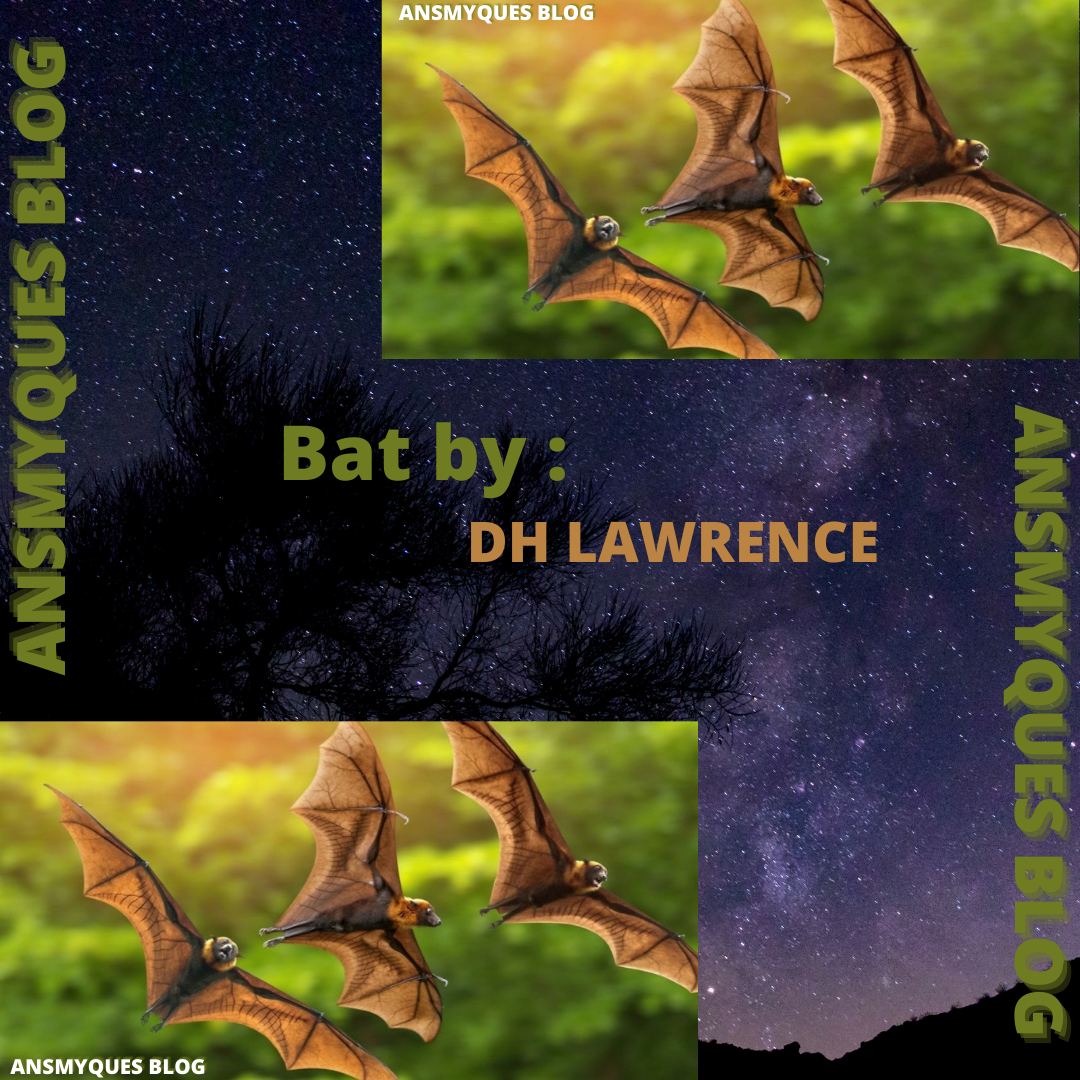THE GOOD MORROW BY JOHN DONNE (POEM, ANALYSIS/SUMMARY, FIGURATIVE EXPRESSION)
THE GOOD-MORROW
I wonder, by my troth, what thou and I
Did, till we loved? Were we not weaned till then?
But sucked on country pleasures, childishly? Or snorted we in the Seven Sleepers’ den? “Twas so; but this, all pleasures fancies be. If ever any beauty I did see,
Which I desired, and got, ’twas but a dream of thee.
And now good-morrow to our waking souls, Which watch not one another out of fear;
For love, all love of other sights controls.
And makes one little room an everywhere.
Let sea-discoverers to new worlds have gone.
Let maps to other, worlds on worlds have shown.
Let us possess one world, each hath one, and is one.
My face in thine eye, thine in mine appears. And true plain hearts do in the faces rest: Where can we find two better hemispheres, Without sharp north, without declining west?
Whatever dies, was not mixed equally;
If our two loves be one, or, thou and I
Love so alike, that none do slacken, none can die
About the poet
JOHN DONNE
John Donne (22 January 1572-31 March 1631) was an English poet and cleric in the Church of England. He was a Roman Catholic during the early part of his life but he became an Anglican in 1615 and was appointed Dean of St. Paul Cathedral from 1621 until his death in 1631. He was regarded as the greatest poet of the metaphysical school. He spent three years each, at Oxford and Cambridge but he could not take a degree because he was a Catholic. When he was at Inn of court, in London, in early 1590’s, he studied law, theology and motley of languages. In 1601, he secretly married Ann More, the niece of Sir Thomas Egerton.
THEMES
(A) Permanent and True Love: The true love that exists between the poet and his lover is not based on their past pleasures until they fall in love presently. The true love which is permanent and universal phenomenon is presented in “Let us posses one world, each hath one, and is one/ My face in thine eye, thine in mine appears/ And true plain hearts do in the faces rest” In other words, the poet believes that the sight of each other far exceeds any fondness they have for other pleasant sight. Even their bedroom where they enjoy has become their world; hence the real world beyond their bedroom is meaningless to them. There is a reference to the dividing hemispheres of the world. The poet asserts that his and his lover’s hemispheres are superior to the Earth’s hemispheres because the true love has no boundaries. There is no cold hemisphere and no western hemisphere where the warm and shining sun has to set everyday.
(B) Childhood Love Experiences: All the rhetorical questions at the beginning of the poem demonstrate that the past lives of the lovers before they actually engage in love are nothing but “country pleasures”. Their past lives are like a child suckling his mother’s breast for survival. The sucking child is ignorant, innocent and unaware of the world situations. Although their past pleasures are mere “fancies”, the poet considers their childhood. experience of love as an ordinary sleeping, “Seven Sleepers den” (This is an allusion to how persecuted Christians slept for several hundred years in a cave).
(C) Immortality of Love: The ideal love is not only immortal: it makes the lovers immortal too: “If our two love be one or thou and I Love so alike that do slacken none can die”. Inanother sense, Donne is of the opinion that if their love for each other is felt equally strongly on both sides, then their love cannot die. The meaning of “whatever dyes, was not mixt equally” is that a love that dies is one where the two lovers do not love cach other with equal strength.
(D) Evolving Love: The love is evolving because the lovers move from pure lust, mere shadow, childish ignorant in the first stanza to a nascent and evolving spirituality which frees the lovers from watching “each other out of fear” but they can see clearly. The lover’s confidence in each other allows them to possess one world. “Let us possess one world, each hath one, and is one”. In other words, the lovers stay and watch each other would occupy their time and there is no need to search further for adventure.
CONTENT
Stanza I (Lines 1-7):
In “The Good-Morrow”, Donne by the very nature of his colloquial openings and the broken rhythms of real speech, turns poetic tradition on its head asking four rhetorical questions at once. The poet wonders what type of life or what picture of reckless pleasures govern his life and his beloved before they actually engage in real love. What was their existence like before they met and loved each other? Were they not like an infant who depended on his mother’s breast for survival? Were the et and his lover asleep in the Seven Spers den? (this an allusion to Seven Christians persecuted by the Emperor Decius in the third century A.D. The Christians were reported to have slept for two hundred years). The simple answer is that before the lovers met, any pleasures, activities, or immoralities they engaged in were a figment of imagination or shadow of enjoyment. All their pleasures and past lives of the lovers are “fancies”. The poet says that the lady he desires and gets in his dream is the present lady who is his lover.
Stanza II (Lines 8-14):
The “seven Sleepers” earlier mentioned paint the picture of unconsciousness, meaningless, senseless and irrelevant existence of the lovers in the past as they “sucked on country pleasures, childishly?” But now, the real and mature love of the poet and his beloved has awakened their sleeping souls as they consider their little “bedroom” the entire world. The poet bids good morning (good morrow) to the “waking souls” of himself and his beloved because their past experience before they engage in mature love is a figment of imagination and darkness of sleep. The two lovers watch the action of each other, not out of fear and jealousy but out of passion to look at each other. In fact, the sight of the lovers is better than any tenderness they have for pleasurable scenes. The little bedroom where the lovers stay together has been converted to the entire universe, otherwise the real world beyond their bedroom is meaningless and valueless to them.
In order to give a special attention to his lover, the poet ignores the world around him. Hence, the sea discoverers may. discover new worlds, men may voyage across the sea to other lands, maps may be spread and men may even chart the locations of the other worlds, Donne intimates his lover that they have no interest in all the discoveries. The poet does not border about discoveries because he (the poet) wants to “possess one world of the harmony of lovers union. In other words, the poet believes that his body is a new world for his lover to explore, and her body is a world for him to possess and explore.
Stanza III (lines 15-21):
The poet now pays attention to his lover’s eyes and heart as the center of love. The poet sees his face directly reflects in his beloved eyes and her face at the same time reflects in his eyes. The lovers’ hearts are exposed to each other as their faces demonstrate. The poet and his beloved have a lot of time for each other as reflected in their devotion and expression. To show that love is a universal and permanent phenomenon, the poet uses the conceit of ‘hemispheres’ (half worlds) to paint the picture that his lover is his “other half and he is other ‘other half of her lover. Donne asserts that his hemisphere and his lover’s hemisphere are superior to Earth’s hemispheres because their genuine love has no cold North Pole and no “declining West” (the poet illustrates that the sun will never set on their love). Another hidden metaphor is deciphered in “Whatever dies was not mixed equally”. The metaphor from alchemy in relation to the love making means that a love that dies is one where the two lovers do not love each other with equal strength. However, the poet ends the poem that if their love for each other is felt equally strongly on both sides, then their love cannot die.
POETIC DEVICES
1. Language: Apart from using archaic words like “troth” (truth, loyalty, faith), thou’ (you), “snorted” (snored) “Good Morrow” (good morning or good day) “thee” (you). “thine” (your), the poet choice of words conveys the theme of the poem. Words like “hemispheres”, “souls”, “little room”, “maps”. “sea- discoveries”, “sharp north”, “declining west” etc. bring out a new chapter in lovers’ lives moving from vulgar “fancies”, immoralities and social vices into a new period of passionate affection.
2. Allusion: The poet uses the allusion of Biblical and Catholic writings, indirectly referring to the legend of “the Seven Sleepers den”. The allusion here is made to seven Christians persecuted by the Emperor Decius in the third century A.D. The Christians were reputed to have slept for some two hundred years. The poet compares the past lives of the lovers before they met to the persecuted seven Christian sleepers.
3. Conceit: To illustrate that lovers’ obnoxious past adventures melt away under the hot perfect sun of their mature love, the poet uses conceit of “hemispheres”. The hemispheres of half worlds paint the picture that the poet’s lover is his “other half and the poet is the half world of her lover. The poet believes that their hemispheres are better than Earth’s hemispheres because the true love knows no boundaries. In lovers’ hemispheres unlike Earth’s hemispheres, there is no cold hemisphere and no western hemispheres where the warm and shinning sun has to set every day. Also, there is a conceit on the medieval alchemy in line 19 “Whatever dies, was not mixed equally” means when two different things are merged then the strength of the newly made substance is weakened.
4. Rhetorical Questions: The abrupt colloquial opening is characteristic of Donne’s love poems. A dude wakes up next to his lover and asks some questions that border on their past lives. The poet-speaker questions “…what thou and I/ Did, till we loved?” In other words, the poet examines the past adventures before their spiritual and mature love as childish and unconscious, a kind of sleep.
5. Flashback: In stanza one, the poet makes
an excursion into the past lives of the lovers. The poet wants to know what freak and eccentric activities they engage in the past before they met. All the four questions in the opening stanza compare their past lives to “Seven Sleepers” and suckling infants. “Were we not weaned till then?/ But sucked on country pleasures, childishly?”.
6. Hyperbole: The entire poem is full of exaggeration. The good examples are “Or snorted we in the Seven Sleepers den?”
(line 4) (The poet believes that the lovers like the persecuted Christians had slept for over two-hundred years before they engaged in real love).” And makes one little room everywhere” (line 11) (the poet asserts that their love has converted their small room into an entire world). Also, the last line of the poem shows that the lovers’ mutual adoration and devotion has grown to the level that they cannot die again.
7. Imagery: The visual imagery is seen in “Let sea discoverers to new worlds have gone/ Let maps to other worlds or worlds have shown”. We can see how men may voyage across the sea to other lands. A cordiform map which resembles a heart shape, is what Donne would have been familiar with when he is making cartographic references. More than simply heart shape, cordiform maps also allow the multitude worlds with opposing hemispheres. The poet is never bothered about the activities of sea-discoverers and cartographers but he would like to possess one world through his beloved. Another image is deciphered in the picture of hemispheres. The lovers are each a hemisphere and when combined in true love, they build the entire world.
8. Alliteration: There are many examples but the prominent ones are: “Where we not weaned…” (Line 2) and “Or snorted we in the seven sleepers…” (Line 4). The alliteration shows that the past lives of the lovers and pleasures they enjoyed are a shadow of joy and darkness of sleep.
9. Dramatic Monologue: It is very common that Donne is often conversational in his poems. The style is referred to as a dramatic monologue because the poet is addressing his beloved. The nature of the poem shows the presence of the passive listener as in lines 8 where the poet addresses himself to his soul and his lover’s soul and wishes them a “good-morrow”. The poet is speaking to his lady who does not intervene as in “…what thou and I/ Did, till we loved? Were we not weaned till then?”
“Let us possess one world…” “In our two loves be one, or thou and I”.
10. Synecdoche: In rhetoric, a part of the referent is used to stand for the whole or vice versa. As regards this poem, the lovers represents each other as “souls” (Line 8), “face” (Lines 15). “eye” (Lines 15), “hearts” (Lines 16), “Loves” (Line 20) “f ever any beauty I did see” (Line 6). In this context, “beauty” means beautiful woman.
FORM/STRUCTURE
Donne himself referred to this poem as a sonnet, the work does not follow the most common rhyming scheme of such works a 14-line poem consisting of 8-line stanza followed by a 6-line conclusion. But this poem has 21 lines and is dividing into three stanzas. “The Good-Morrow” contains 21 lines, split into three stanzas of seven lines each. Most of the lines have 10 syllables. Donne also presents a unique rhyme scheme that splits each 7 lines-stanza into a quatrain
(A set of four lines rhyming ABAB). followed by a triplet (three lines rhyming CCC). For example, stanza two has the following: souls (A), fear (B), controls (A). everywhere (B), gone (C), shown (C), one (C). Another style that Donne presents here is that it makes the quatrains more expository (that is, the quatrains describe or examine issues) and triplets more interpretive. The poet-speaker raises a certain issue in the first four lines and then uses the last three to reflect on the issue and draw a concrete conclusion. In stanza one, for example, the quatrain questions the past lives of the lovers. The triplet
responds to the rhetorical questions by saying that before they met each other, any pleasures they enjoyed were just like darkness of sleep and shadow of the joy they now feel in each other’s company.


